 It was more than six years ago that Stuart and I first, unsuccessfully, tried the door at St Andrew’s church in Middleton, North Yorkshire. We had tried since then too, the last time we were in the area. And we really didn’t hold out much hope of getting inside this time either… but as we were passing and had a little time to spend with Gary before our ways parted, we thought we would give it another go.
It was more than six years ago that Stuart and I first, unsuccessfully, tried the door at St Andrew’s church in Middleton, North Yorkshire. We had tried since then too, the last time we were in the area. And we really didn’t hold out much hope of getting inside this time either… but as we were passing and had a little time to spend with Gary before our ways parted, we thought we would give it another go.

At first glance, the church looks like many other medieval parish churches across the land, but a closer look at the tower shows it to be something a little bit special. The base of the tower is Saxon and a church has stood here since the early days of Christianity in the region…well over a thousand years. The blocked up doorway in the tower dates to a thousand years ago, while the Anglian Cross set into the wall above it is around thirteen hundred years old. We knew these were not the only treasures though…and we really wanted to get inside.

Stuart turned the handle… and the door in the eight hundred-year-old porch failed to open. We had expected nothing else to be fair. As a matter of habit, I tried it too…just in case. These ancient doors sometimes yield to a different touch, but not this time. It appeared we were out of luck once more and the elusive church would keep its secrets. On impulse, I suggested that Gary try the handle… and this time, it seemed, the right touch was his. The door swung open and, after years of trying, we finally crossed the threshold. Sometimes, not only the touch but the time must be right.

The interior of the church was brightly lit as some of the parishioners were decorating the tree for Christmas.

It is a plain and simple church… but again, only at first glance. The nave, the main body of the church, is early Norman, around nine hundred years old. The beautifully proportioned arches were rebuilt in the thirteenth century and the chancel, in fourteenth-century style, was added in the nineteenth century.

The capitals of the Norman pillars are finely carved, with a lion mask, that looks much more like a dragon, set into the southern wall of the nave.

There is a squint through which those in the side chapel would have been able to see the raising of the Host during Mass, but which now gives a glimpse of a wonderful piscina that now holds a carved wooden replica of a Viking stone, but its real glory is the serpent carved in stone around it.

The font has a fifteenth-century cover; there were often locked and chained to protect the holy water they contained. Like the piscina… the basin that allowed surplus wine and holy water to be given back to the foundations of the building … this was done to protect it from being used by witches.

The chancel is simple and, had we been alone in the church, I would have looked for the carved misericords under the seat of the choir. Instead, I contented myself with photographing the east window above the altar, showing the crucifixion.

The other windows were beautiful, showing Jesus as the Shepherd, or with the little children. Many of the windows are in the Arts and Crafts style and I loved the colours in the window showing Faith and Hope.

The hammer beam roof of the chancel is decorated with carved bosses and has the solid and comfortable look of many old village churches, but the pulpit from which John Wesley once preached is quietly elegant. Sadly, we were told, the roof outside was in a far worse state as the lead had been stripped and stolen. St Andrews is one of many churches to suffer this kind of vandalism.

But, lovely as it is, it was not for the church itself that we had come. The northern aisle holds a treasure trove of carved stone… and oddly enough, I was to learn that had we been able to get in on that first visit, the best of them was away on loan to the British Museum. Which just goes to show, sometimes you only get things right by ‘accident’…








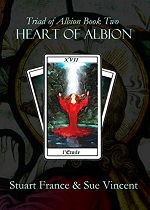






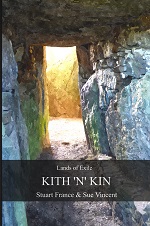








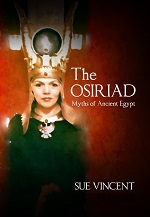










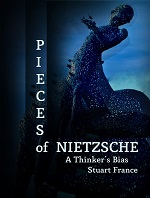
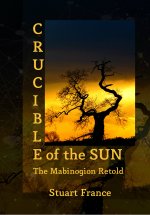


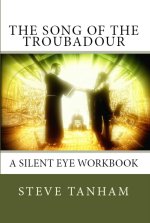


What a wonderful visit, Sue. I am going to email you for some advice with regards to our trip to Glastonbury. I am sure you know lots of secret places we can visit.
LikeLike
I know a few places in that area worth seeing, out of the town itself.
The best part of this visit was yet to come… and the reason we had wanted to get into there in the first place )
LikeLiked by 1 person
I am doing my best to read your Whitby posts, Sue.
LikeLike
There should be plenty in them to give you a start in the area… though there is so much more to see than we managed in that short weekend 🙂
LikeLike
As I was reading this, I was sharing the age of the different facets of the church, and it was pretty stunning to both of us how you can discern those details – years of exploration, I suppose. An amazing collection of history. And the stained glass is lovely. Thanks for sharing, Sue. I’m glad Gary had the magic touch. Happy New Year. ❤
LikeLike
Great post. Happy New Year!
LikeLike
Thank you. Happy New Year, James. 🙂
LikeLiked by 1 person
Happy New Year!
LikeLike
Happy new year 🙂
LikeLiked by 1 person
Thanks
LikeLiked by 1 person